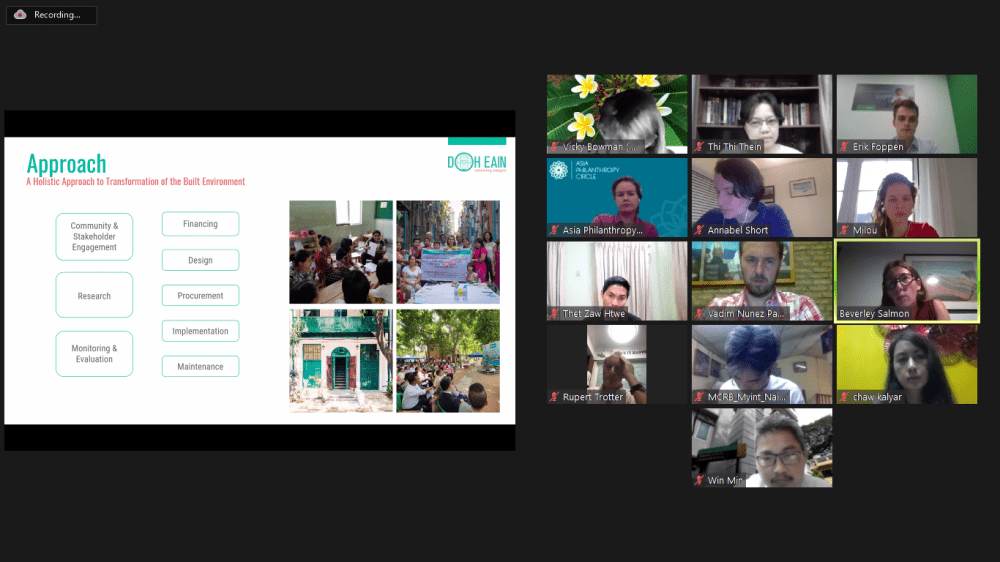EuroCham Myanmar Construction & Infrastructure Advocacy Group, MCRB, IHRB, Doh Eain, Statement Architecture + Design and Asia Philanthropy Circle discussed “Dignity by Design” in Myanmar built environment
On Monday 11 January, a virtual discussion was held between EuroCham Myanmar’s Construction & Infrastructure Advocacy Group, Myanmar Centre for Responsible Business (MCRB), the Institute for Human Rights and Business (IHRB), Doh Eain, Statement Architecture + Design and Asia Philanthropy Circle. Central to the discussion was how the ‘Framework for Dignity in the Built Environment’, developed by the IHRB, could be implemented in renovation and building projects in Myanmar.
Mr. Erik Foppen, co-chair of the CIAG, started the meeting by outlining the group’s key priorities, including the preservation of heritage, environmental sustainability and standardisation, and noted that the group has been engaging with various stakeholders, such as the Myanmar Engineering Society and the Department of Research and Innovation (Ministry of Education).
Annabel Short of the IHRB elaborated on the Dignity by Design framework, which is intended to be applied to the full lifecycle of built environment projects (land-planning & finance-design-construction-management & use-demolition & redevelopment). It is designed to promote cooperation between all stakeholders throughout the lifecycle – with a focus on human rights and Sustainable Development Goals. The aim of the IHRB is to include the Dignity by Design approach in policy and regulation, thereby echoing the CIAG’s focus and priority on standardisation. The first project under the framework has started in Bergen, Norway. Feedback on the initial phase of the project is used to create opportunities that will strengthen both human and social rights in municipal procurement templates.
The Dignity by Design framework resonates with the work of MCRB in many fields, as noted by Vicky Bowman of MCRB. These include the areas of disability inclusion and accessibility, the protection of human rights, and the inclusion of ESG criteria in projects.
Beverly Salmon touched upon the ongoing projects and activities of non-for-profit social enterprise Doh Eain that are closely aligned with the Dignity by Design framework. Examples are heritage conservation in Yangon, the Myoe Lan Tha inclusive public spaces project and climate resilience for water security in Thaketa. For their projects, involvement of the community is key.
Statement Architecture + Design was represented by Chaw Kalyar, who has been working on several commercial and residential architecture projects in Yangon and Mandalay as well as heritage projects, such as the Australian Ambassador’s residence. While being active in the Myanmar Green Building Society, she has worked on the green building rating system for Myanmar and the green building section in the 2020 version of the Myanmar National Building Code.
The participants discussed how the Dignity by Design framework could be of use in Myanmar, including the challenges that come with the implementation of the project and the identification of a first Asian Pilot Project in the country. All parties acknowledged that they have a common vision to promote sustainable development and the inclusion of ESG criteria in the construction sector in Myanmar.
To read more about the discussed topics, click here.





No Comments
Sorry, the comment form is closed at this time.